- MMA & Combat Sports, Resistance Training
How to Increase Strength For Boxing and MMA Performance
- By Phil Daru
- On May 20, 2021
How to Increase Strength For Boxing and MMA Performance
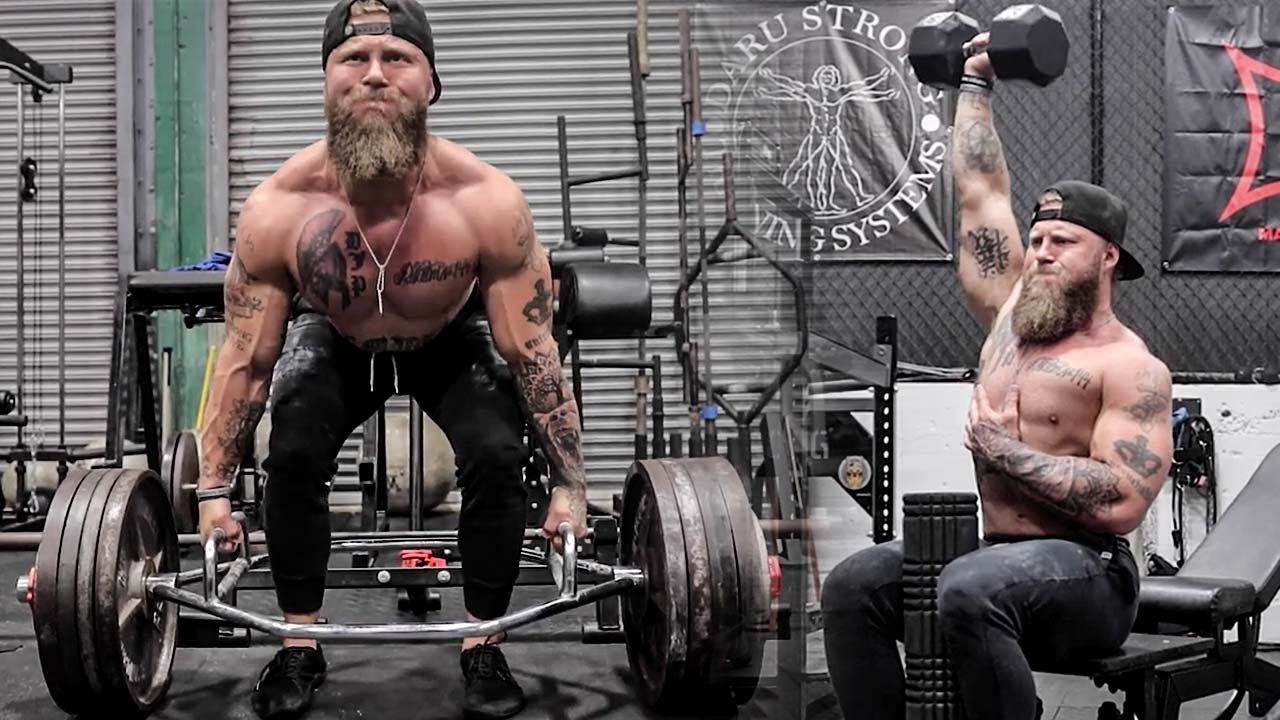
Strength is a controversial subject in the fight game.
Boxing and MMA purists still scorn the idea of lifting weights for performance. These traditionalists believed that lifting weights would make you slow, stiff, and rigid.
They believe it will drain the power out of your punches.
That strength training for boxing and MMA makes a fighter too bulky and slow.
This controversy surrounding strength training for boxing and MMA leaves many people asking:
“Does strength matter? And if so, how do you increase strength for boxing and MMA?”
The answer is, yes.
Strength does matter for both your boxing and MMA performance.
Imagine, you’re in the cage and your opponent leaps on your back. Your strength will determine if, and how quickly, you can get up off the ground. When you’re in the clinch, you need the isometric strength to maintain your advantageous position or break your opponent out of theirs. When you’re on the ground, you need the strength to lock up your submissions, and force your opponent to tap.
But strength isn’t just important for “being strong”.
Strength is also important for getting heavier hands and throwing heavier strikes in general, strength plays a role in how deep your gas tank is, and strength carries over to many other areas of different combat sports.
So, yes, strength is important.
The next question is, how do you increase strength for boxing and MMA performance.
That’s what I’m about to share with you here.
But before we go into that, if you’d like all of your strength training organized by me and handed to you on a golden platter, check out Heavy Hitter. Heavy Hitter was formulated from the results of field testing with world class fighters, research, and trial and error. It’s designed to give you the strength, power, movement quality, and endurance you need to succeed in any combat sport. Check it out at this link and receive a 50% discount for being a blog reader.
Alright, let’s go into it.
The Four Types of Strength Needed for Boxing and MMA Performance
There are four types of strength you’ll need to supercharge your boxing and MMA performance.
The four types of strength you need to increase for boxing and MMA performance are relative strength, absolute strength, isometric strength, and eccentric strength. I could throw in explosive strength and speed strength, but that’s dipping into power territory.
Relative Strength

Relative strength is an overlooked facet of strength, but it’s an important one. In their rush to crush the weights, many young, and even older athletes skip out on relative strength. This is a big mistake, as relative strength is the foundation of your ability to produce force, move, and be explosive.
But what is relative strength?
Relative strength is the amount of force you can produce relative to your bodyweight. An example of relative strength on display is two guys who weigh the same having a push-up contest. The guy who does more push-ups has more relative strength.
In another example, two guys who weigh the same are repping out 315 on back squat. The guy who does more reps has more relative strength.
In one final example, two guys who weigh the same are doing a max vertical jump test. The guy who jumps higher has more relative strength.
So you can see that relative strength plays more than just a role in strength. It plays a role in power, stability, movement quality and much much more. In fact, relative strength is the main difference between bulky powerlifters and athlete who still lift a ton of weight, but can also leap 35+ inches off the ground, throw knockout punches, explode for a sub 4.4 40-yard dash…
I think you get the idea.
In less words… Relative strength can be the bridge to more power and explosiveness.
Absolute Strength
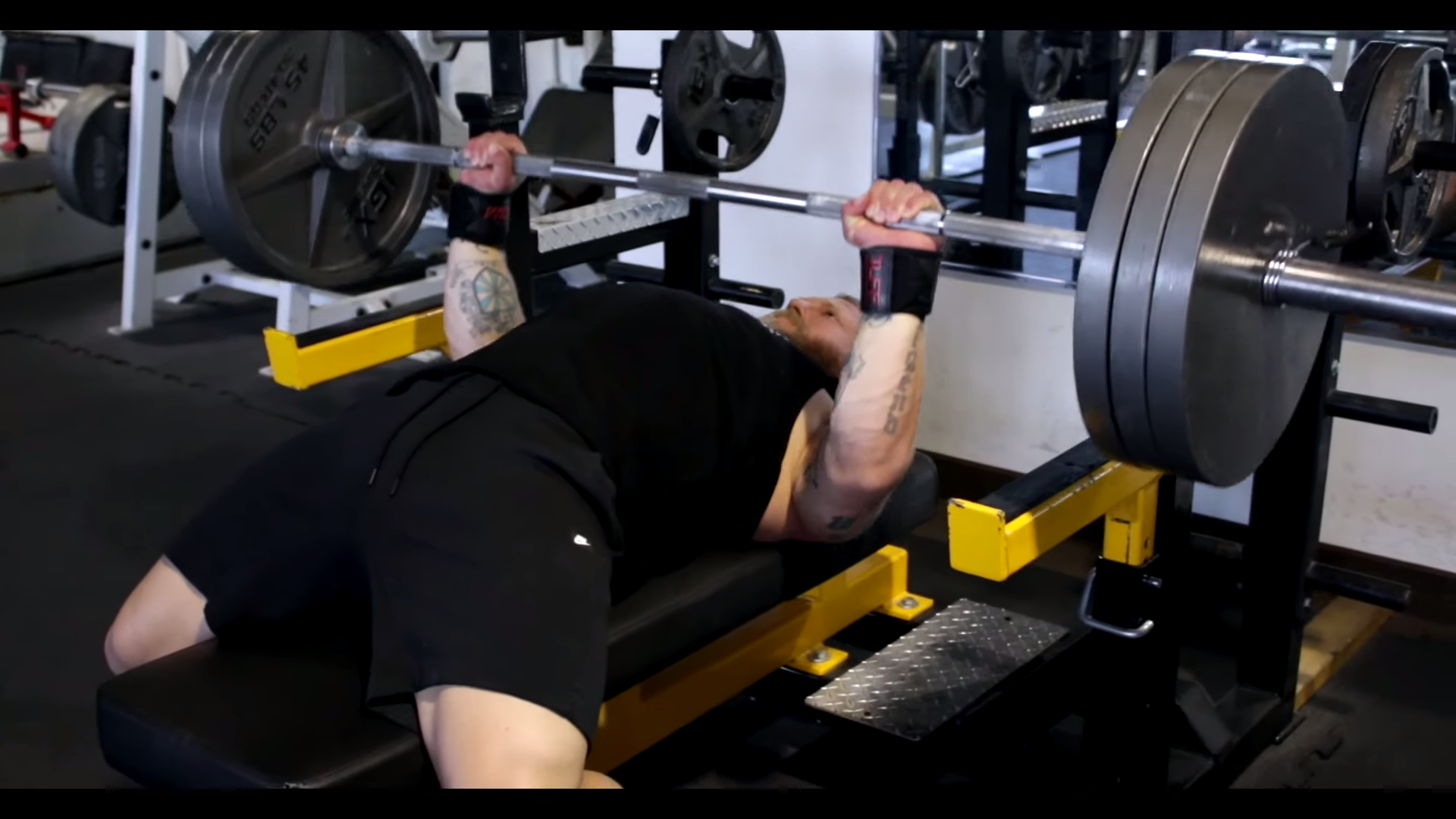
Absolute, or maximal strength, is the maximum amount of force you can produce.
Back to the example of you and your friend, if you squat 315, and he squats 315, you both have the same amount of absolute strength. If he squats 320, he has more absolute strength than you.
Absolute strength is what we typically think of training when we think of lifting weights – doing heavy bench presses, squats with plates loaded up to the end of the barbell, deadlifts loaded up so heavy the bar bends when you lift it off the ground.
These are builders of absolute strength.
But absolute strength is also important for other aspects of your performance. The most critical example is absolute strength’s role in your power development. Absolute strength is the maximum amount of force you can produce, and the equation for power is force times velocity. So, when velocity comes into play, absolute strength can absolutely play a role in your power.
We’ll talk about how to transfer that strength into power later on in the blog post.
Isometric Strength
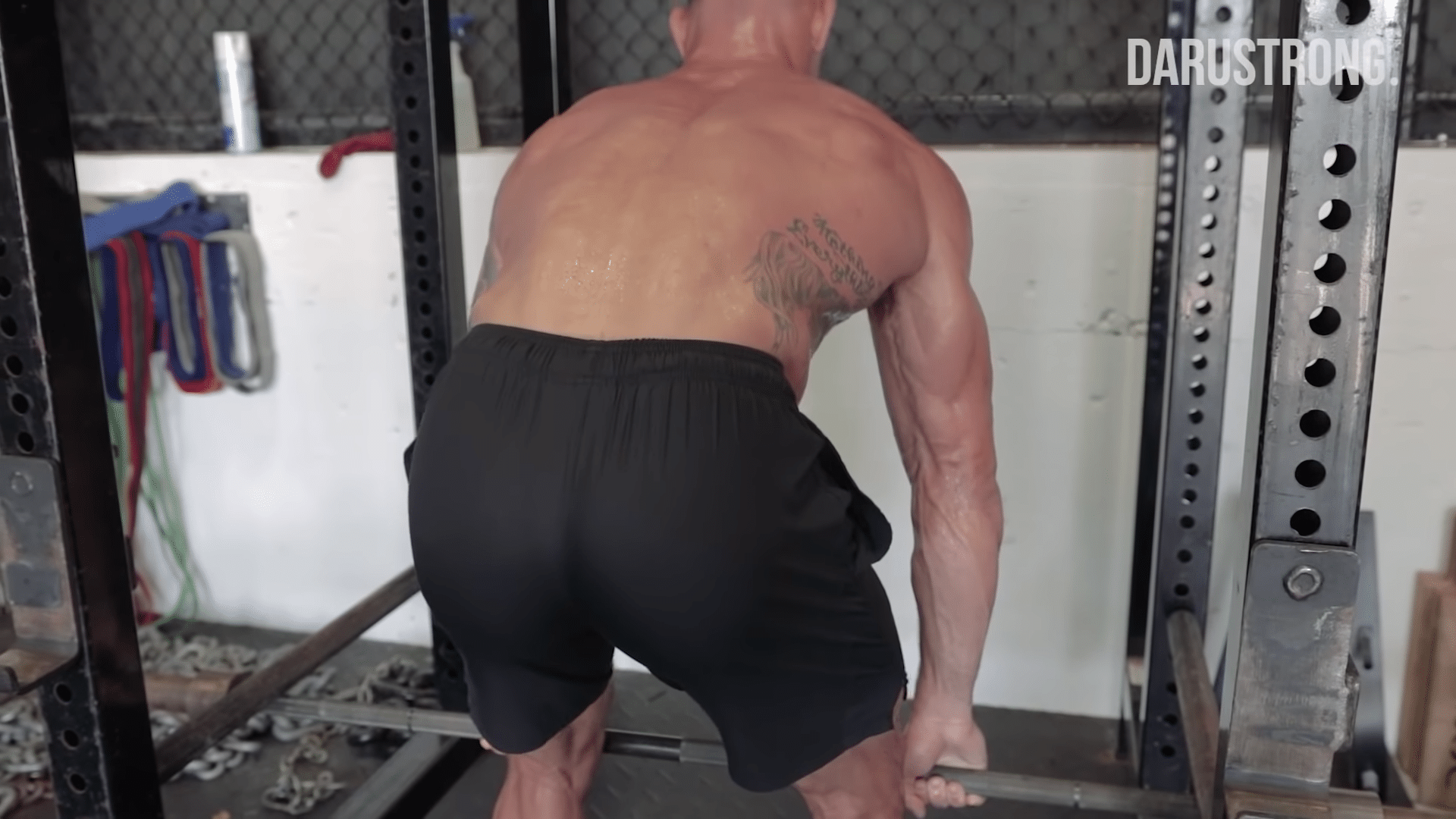
Isometric strength is another critical type of strength for all athletes. It’s the amount of force you can produce or maintain statically.
Maybe you’re already beginning to imagine how this comes into play for your sport… But… In the fight game we rely heavily on isometric strength to maintain position in the clinch or on the ground. We also use it to submit opponents, or hold off opponents.
The main modality for building isometric strength is with isometric tempos. This tempo training also carries over to power, in that you teach your body to recruit larger, more fast-twitch motor units when you perform isometric tempos.
We’ll talk more about that later.
Eccentric Strength
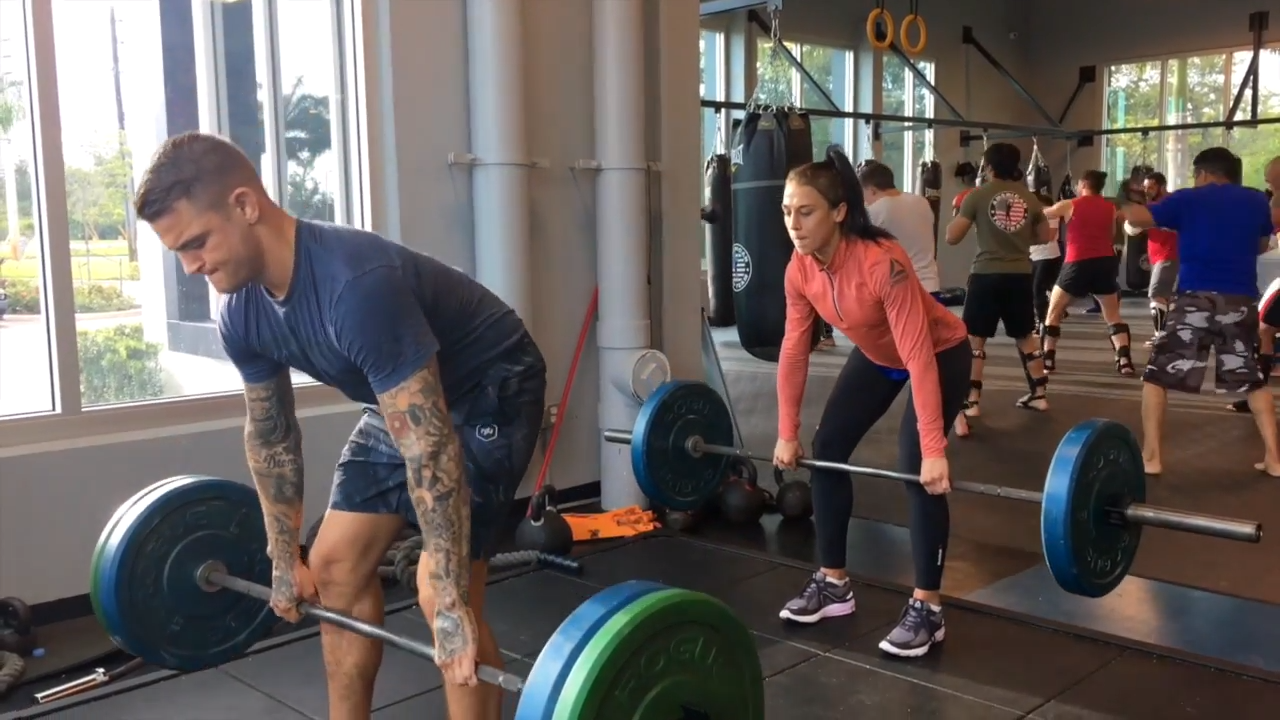
Eccentric strength is the amount of tension you can apply to the muscles as it lengthens. In other words, it’s the amount of force you can absorb.
Funny enough, eccentric strength is an accurate display of how much force we can produce. Our body has built in mechanisms that prevent our muscles from producing maximum force when they contract.
However, we can push the limits of our force production when the muscles are being put on stretch.
As I said above, eccentric strength determines the amount of force you can absorb. This is advantageous, because the more force you can absorb, the more you can produce. Thus, if you’re weak eccentrically, there’s a lot of room to grow.
We’ll talk more about eccentric strength later as well.
The Five Components of Strength Training for Boxing and MMA Performance
When it comes to increasing strength for boxing and MMA performance, there are a few components we need to address right out of the gate.
Specifically five of them that we need to address in order to make our strength training practical and transferable to your specific combat sport.
Strength Training Component #1: Movement Transferability
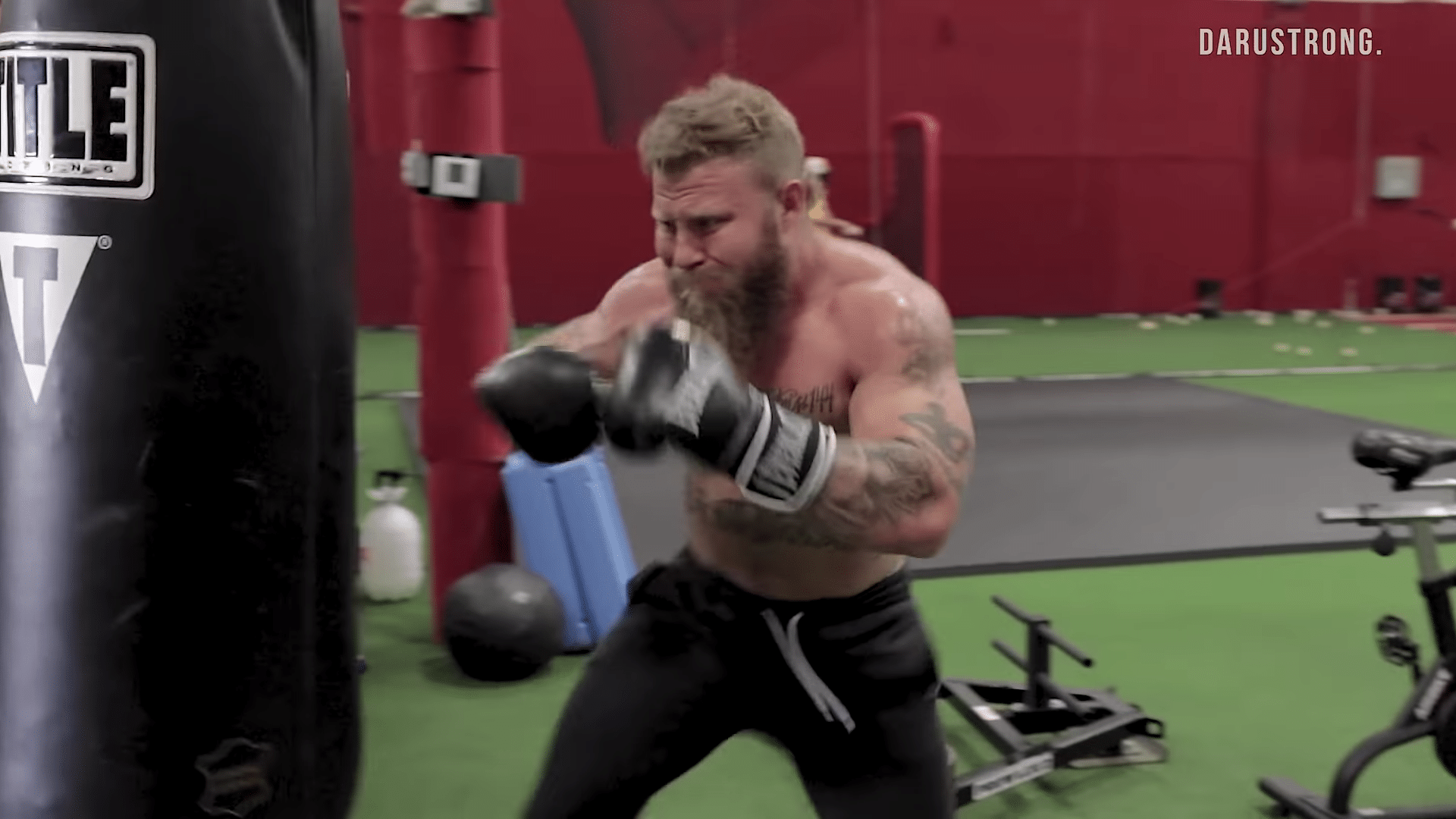
The first component of strength training for combat sports is movement transferability.
We want to build strength that we can actually use in the cage, ring, or wherever we may find ourselves in a combat situation.
I’m sure you’ve seen how powerlifters train. They lift heavy weight after heavy weight. They do multiple heavy compound lifts in a single day to squeeze out ALL the strength gains from their session.
You may have also noticed that powerlifters don’t look anything like combat athletes.
Powerlifters are big, bulky, heavy, and most of them aren’t very athletic.
This is simply because they’re training to be good at lifting. We’re training to improve our performance for boxing and MMA.
So, our training will look wildly different from the training of powerlifters.
The first difference when it comes to increasing strength for boxing and MMA is the movements we’ll be using.
Some movements will be your typical compound lifts – bench, squat, deadlift.
Others will be not so typical – Zercher squats, trap bar deadlift, close grip bench press.
The reason for the difference in movements is two-fold.
The first reason for this difference is we want to use movements that are transferable to the sport. A trap bar deadlift is more sport-specific than a regular deadlift, and a Zercher squat is more sport-specific than a regular squat.
The second reason is that fighters come with their own set of muscular imbalances.
If you don’t know, muscular imbalances are imbalances in the muscles that affect the integrity of a certain joint.
Fighters commonly have tight shoulders and pecs that pull the shoulder joint into a vulnerable position.
Their tight hips flexors do the same to the hip joint.
All this said, we want to pick movements that are accessible to us with our inherent muscle imbalances. That’s not to say we don’t want to address those imbalances. But, we don’t want to waste time trying to stretch and mobilize our way into performing movements we’re not ready for yet.
The Best Movements to Increase Strength for Boxing and MMA Performance
As I already said above, there are certain movements that are more conducive to the sport than others. That means they’ll have better carryover to your performance in the ring, octagon, or wherever.
I’m going to share five of them here.
#1: Trap Bar Deadlift
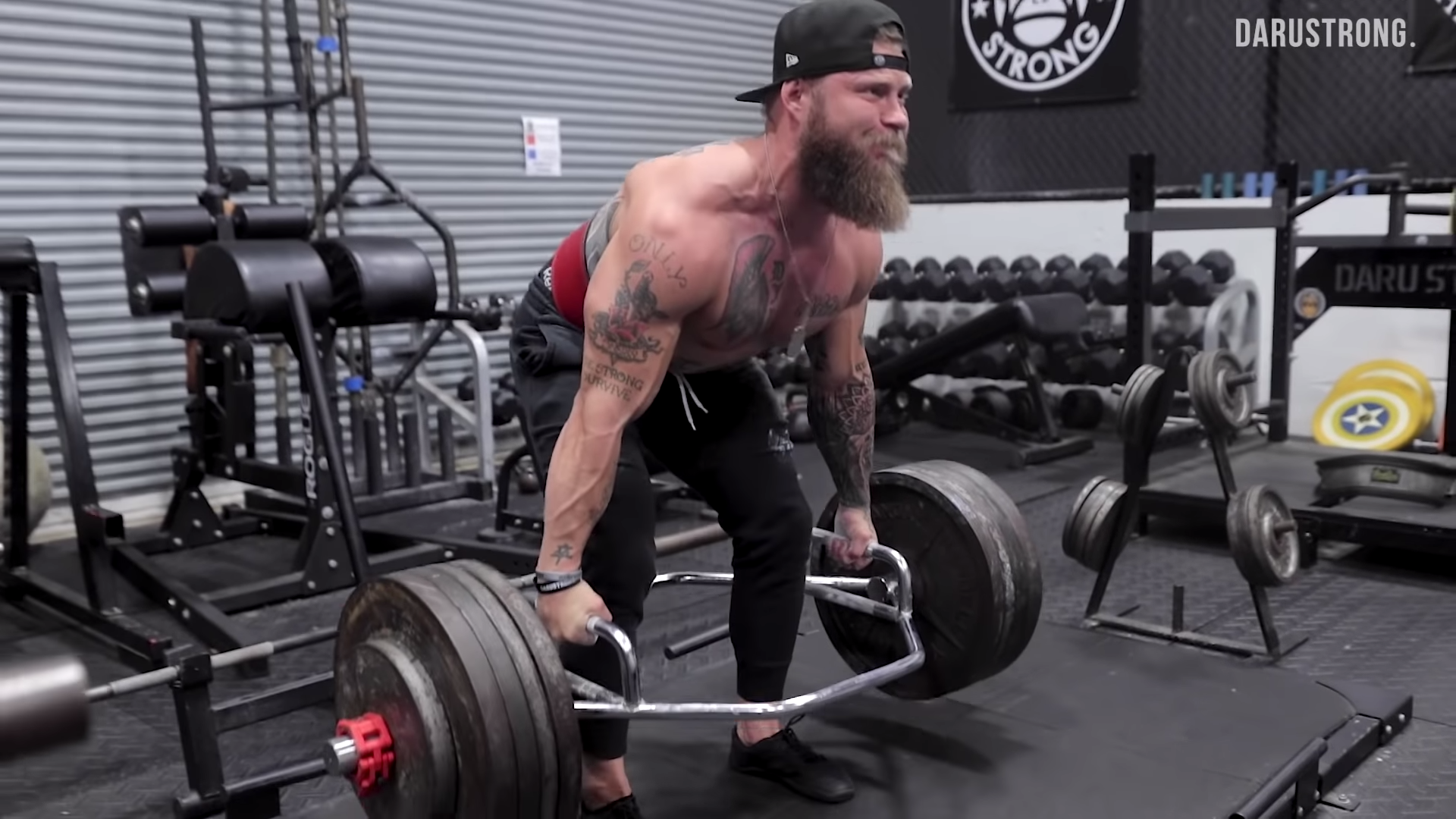
The trap bar deadlift is one of the most accessible movements for fighters. And it happens to be very sport specific.
The trap bar deadlift is a mixture of a bend and squat patterns. It works the hamstrings, glutes, quads, erectors, as well as the muscles of the upper back when done right.
This movement is great for boxing and MMA, not only because of its easy accessibility, but also because it’s a great posterior chain builder (a commonly weak link in most fighters).
The trap bar deadlift is also a more explosive movement in general. Most athletes can move the trap bar deadlift with more speed on average than a squat or deadlift. And that increased speed means better transferability to the sport.
How to Perform Trap Bar Deadlifts:
- Stand in the middle of the trap bar, feet hip width apart
- Pin the shoulders down and back
- Sink your butt down and grab the middle of each handle
- Keeping your chest up, push the floor away from you and move the bar with intention.
- Push the hips back slightly and sink the butt down to return to your starting position
#2: Zercher Squats

I love Zercher squats for multiple reasons.
For one, it’s easily accessible for most fighters. When compared to a front squat or even a back squat, the Zercher squat requires way less mobility.
The Zercher squat is also very sport-specific. The movement mimics a double under, and builds the strength you need to successfully manhandle your opponent to the ground.
How to Perform Zercher Squats:
- Start with the barbell in the crook of your elbow
- Keep the elbows tight towards the body
- Sink the butt down to parallel
- Explode back to the top
- Repeat for desired reps
#3: Close Grip Bench Press

I stated above that many fighters have tight pecs that may compromise their shoulder joint.
The close grip bench press takes the emphasis off of the pecs and places more emphasis on the shoulders and triceps.
These muscles play a big role in your striking, especially the end range of motion of a punch.
Strengthening them the right way can only help.
How to Perform Close Grip Bench Press:
- Place the hands shoulder width
- Pin the shoulders down and back and unrack the bar
- Lower the bar slightly below your chest
- Explode back up to the top
- Repeat for desired reps
#4: Landmine Press
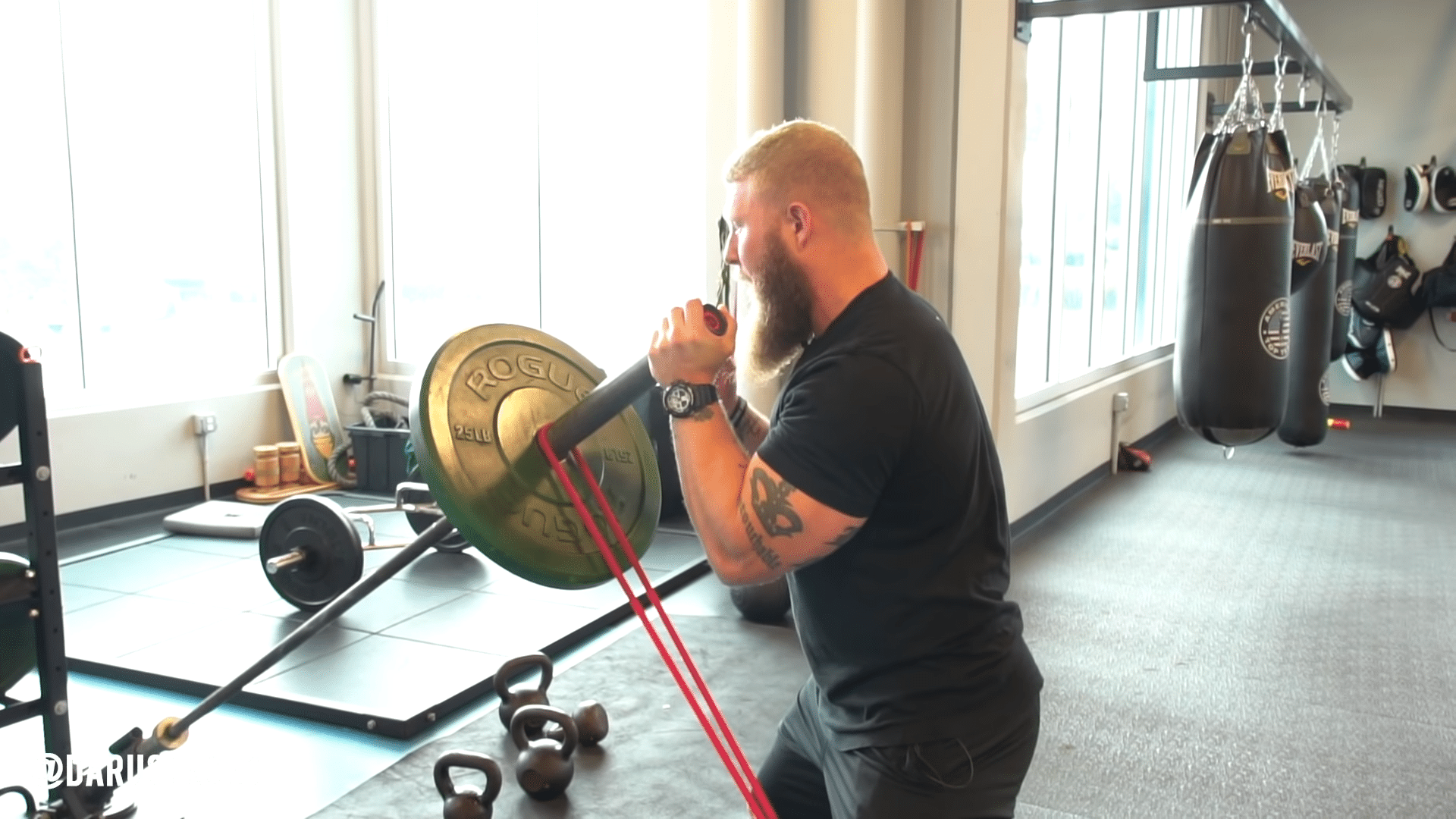
Landmine press is another sport-specific movement that can build strength through the same range of motion as a jab or a cross.
The landmine press is a great builder of the shoulder and the triceps as well.
It can be regressed into a half kneeling position or progressed into a more explosive kind of press than incorporates the lower and upper halves.
If landmine presses aren’t in your movement arsenal, I recommend you add them now.
How to Perform Landmine Presses:
- Start with the feet in a staggered position. Your rear foot should be on the same side as the hand the barbell is in
- Pin the shoulder down and back and make sure the elbow and wrist are stacked
- Explode up
- Lower back down slowly
- Repeat for desired reps
#5: Sumo Deadlift
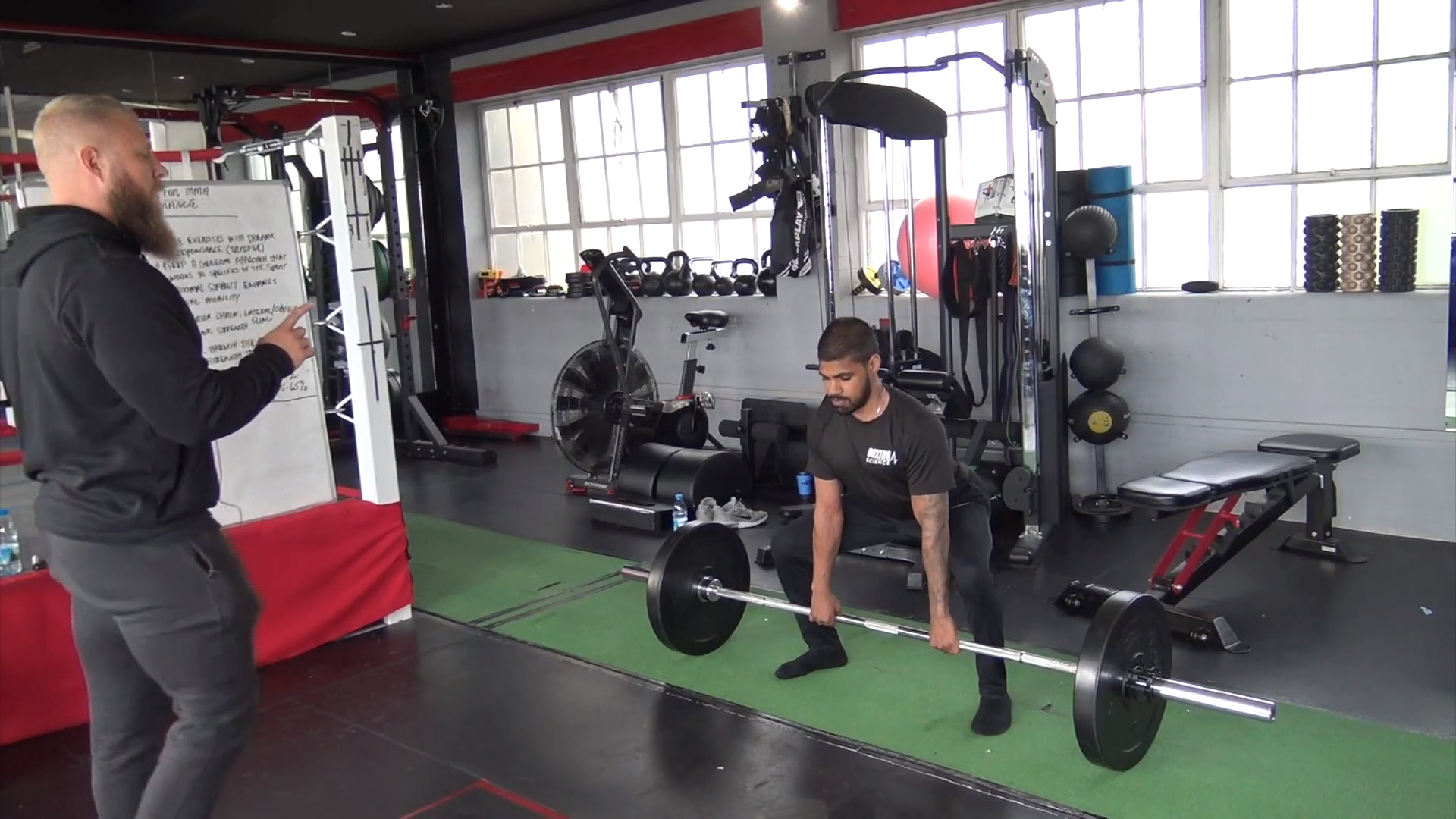
I like the sumo deadlift for one simple reason…
It hammers away the common weakness most fighters have – a weak posterior chain.
I’ll discuss the implications of a weak posterior chain in another post. For now just know that having a weak posterior chain can hurt your power production, movement quality, and even lead to injury.
A great starter to build your posterior chain is the sumo deadlift.
How to Perform Sumo Deadlift:
- Start with the feet just outside shoulder width, feet turned out 45 degrees
- Push the hips back and lower the butt down
- Grab the barbell shoulder width. You can use a normal grip or a switch grip
- Pin the shoulders down and back, create tension in the hips, and push the floor away from you
- From the top, push the hips back and sink the butt down
- Repeat for desired reps
Strength Training Component #2: Frequency and Volume
The second component of strength training for boxing and MMA performance is training frequency and volume.
As a combat sport athlete, your number one priority should be your skill. Whether that’s jiu-jitsu, muay thai, boxing, or something else, your training should not interfere with your skills training.
We don’t want to be excessively sore from strength training. And we don’t want muscular fatigue to get in the way of giving our all to our skills training.
Again, the goal is to become a better fighter, not a better lifter.
So, we must take an intelligent approach to programming in terms of frequency and volume.
Recently, there have been strength coaches who have underscored the value of strength training during a camp OVER skills training.
These coaches believe that strength training and physical preparation should be the number one priority, as the fighter should already have the adequate fighting skills needed to succeed in competition.
There’s some merit to this.
But I still believe that skills training is the most important to a fighter’s success.
You can think of a fighter’s skills training as the ice cream. Strength training is the chocolate syrup, whipped cream, and cherry on top.
All this said, frequency and volume has to be addressed.
You should not train so many times that you exhaust your nervous system or overtrain your muscles.
I like to stick with 3-4 times a week.
The same applies as far as volume goes.
Reps and Sets to Increase Strength
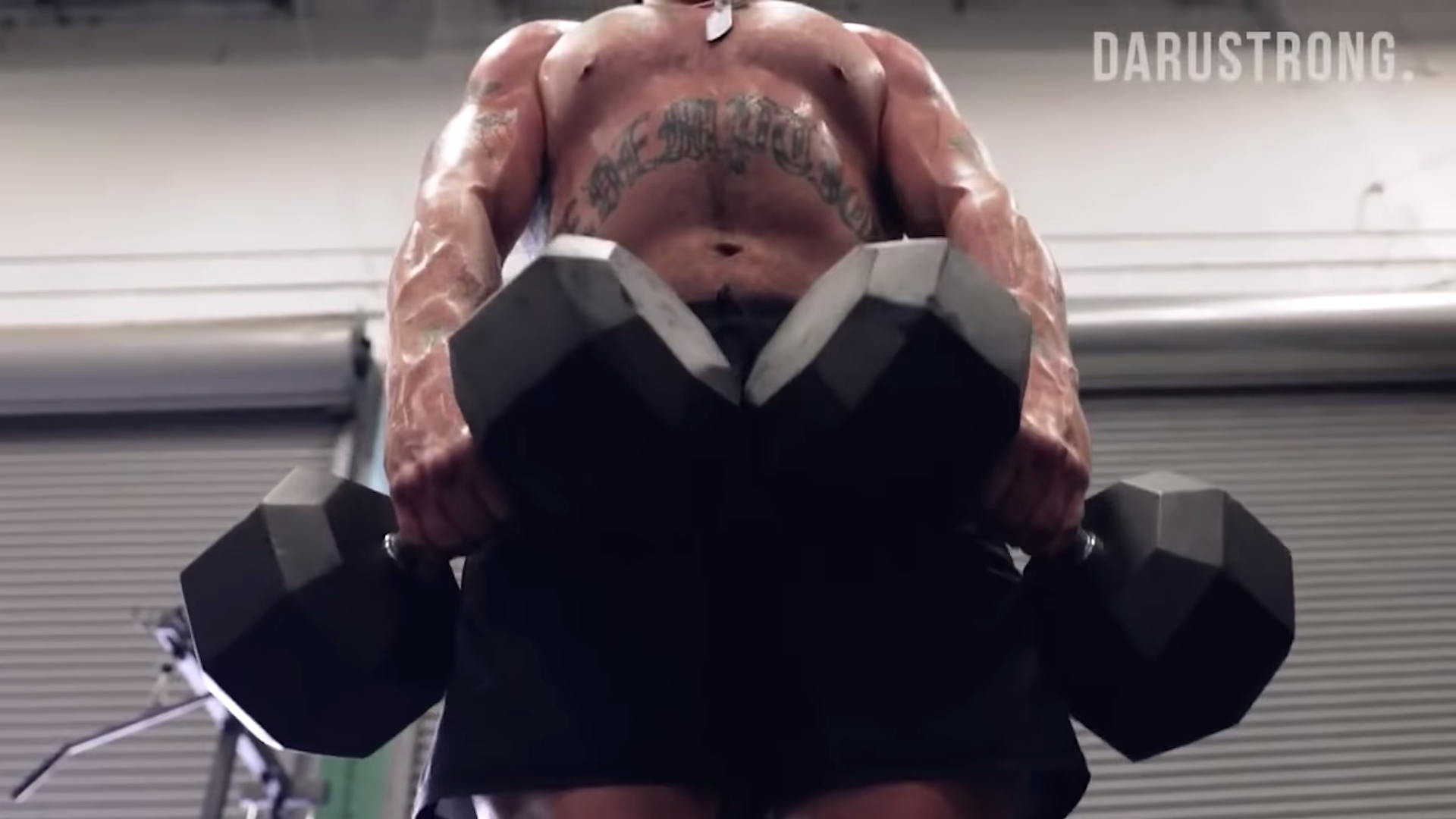
If you want to increase strength for boxing and MMA performance, you need to have your sets and reps dialed in.
Your reps and sets determine the total volume performed by a certain muscle.
As fighters, it’s critical that we pay attention to the amount of volume we perform in our workouts.
As I stated above, we’re training to be better performers in the ring, and octagon. Not better performers in the gym.
You don’t want your workouts to interfere with your skills training in any way.
So, we want to give our muscles the minimum effective dose they need to grow and increase in strength.
In general, I like to limit the amount of sets performed for a certain movement to seven. There are scenarios where I’ll perform more sets. But, in general, I like to stay between 4 and 7.
This is the sweet spot you need to hit to increase your strength.
The amount of reps you perform will be determined by the amount of sets you perform, as well as the intensity that you perform the reps at.
In general, the higher the amount of sets, the higher the intensity will be, and the lower the amount of reps performed.
The opposite is also true – the lower the amount of sets, the lower the intensity, but the higher the reps.
Strength Training Component #3: Program Structure
The third component of strength training for boxing and MMA performance is workout structure.
A fight is a full body encounter. It doesn’t matter if you’re in boxing, MMA, or somewhere in between. Your body is a machine. It never works in isolation in sport. It always works as a whole.
So, what do you think is best:
Having a chest day, leg day, back day, shoulder day, and arm day where each body part only gets stimulated once a week? Or do you think full body workouts are better?
We’re throwing those bro splits out the window.
If you want to properly strength train for boxing and MMA performance, you should stimulate the full body every time you train.
Not only are full body workouts more sport-specific, but they also lead to more muscle and strength gains… And more than that… Training one muscle group per day leads to better rep quality than if you’re on your 10th set of chest.
Full body workouts allow you to perform reps with more intention and sharpness.
Strength Training Component #4: Periodization to Increase Strength
The fourth component of strength training for boxing and MMA performance is your training periodization.
The truth is, any periodization will give you results if you follow it to the T. But, if you want optimal results, there are certain periodization models you should lean into and certain periodization models that you should steer clear of.
There are three I’ll bring to your attention:
Traditional Linear Periodization
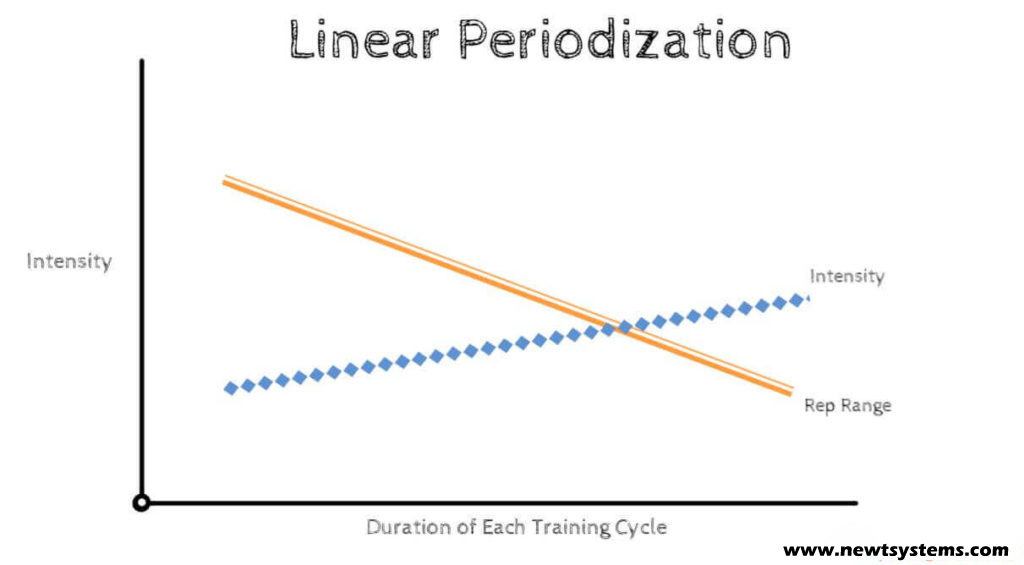
This is your typical strength training periodization. The basis of this model is that as time goes on, your intensity increases as the volume you perform decreases.
This periodization has longer periods of training and is more focused on general training.
This model is typically used with athletes who have seasons.
It’s perfect for beginner athletes. The trouble starts to arise when you’re trying to elicit adaptations with intermediate to advanced level athletes.
Undulating Periodization

(Image from breakingmuscle.com)
The undulating periodization is the periodization I used in my Fight Ready program.
The basis for it is general adaptation syndrome. General adaptation syndrome, developed by Hans Seyle, is how the body responds to stress.
There are three stages.
The first is alarm. This occurs when we first perceive a new kind of stress and the body enters fight or flight mode.
The second stage is resistance. Resistance occurs when the stress continues. When this happens, the body remains in a heightened state to fight off the stress.
The last stage is exhaustion. This occurs when the body’s resources have been depleted in an attempt to fight off the stress.
Undulating periodization plays on this by providing variation in the stressors presented to the body so that the body cannot fully adapt. These stressors can be varied on a daily or weekly basis.
This model is optimal for well-trained athletes as it helps them avoid plateaus that can occur with linear periodization.
Condensed Conjugate Periodization
The condensed conjugate periodization is the method I currently use for my fighters.
The idea behind it is that by training dynamic effort for one half of the body and maximal effort for the lower half of the body, it provides enough variation to elicit the desired adaptations without digging a grave for the athlete due to the 72 hour interval in between training session.
This means that we’ll have one max effort upper day/dynamic effort lower day and one max effort lower day/dynamic effort upper day with a GPP day in between.
I’ll write more about this method in another post.
Strength Training Component #5: Transferability to Sport
The most important aspect of training to increase strength for boxing and MMA performance is making it usable in your sport.
We already talked about selecting movements that are transferable to the sport.
Now, we want to take things a little deeper.
While strength in and of itself is practical for our sport, we also want to display that strength dynamically, quickly, and explosively.
In other words, we want this strength to transfer over to power.
There are multiple modalities we can use for this.
1. Accommodating Resistance

Accommodating resistance is adding bands or chains to a movement to force the athlete to accelerate through the entire range of motion in said movement.
When you’re performing a squat, there are portions of the lift that are easier than others. When you’re at the bottom of the movement, you have the most tension on your muscles. As you reach lockout, the force of movement becomes lower and lower.
Adding bands forces you to accelerate through the whole movement instead of decelerating at the top.
So in less words, we’re making the “easier” parts of the lift more difficult.
When used correctly, accommodating resistance can increase your rate of force production, especially when used in conjunction with lower weights (around 30% of your 1RM).
2. Complex Training

Complex training is performing a heavy lift followed by a matching explosive movement.
The idea is that the heavy lift heightens the nervous system.
The basis behind this is that the heavy lift heightens the nervous system. You can then use that heightened nervous system to perform the lower-intensity movement faster and with more power.
3. Contrast Training
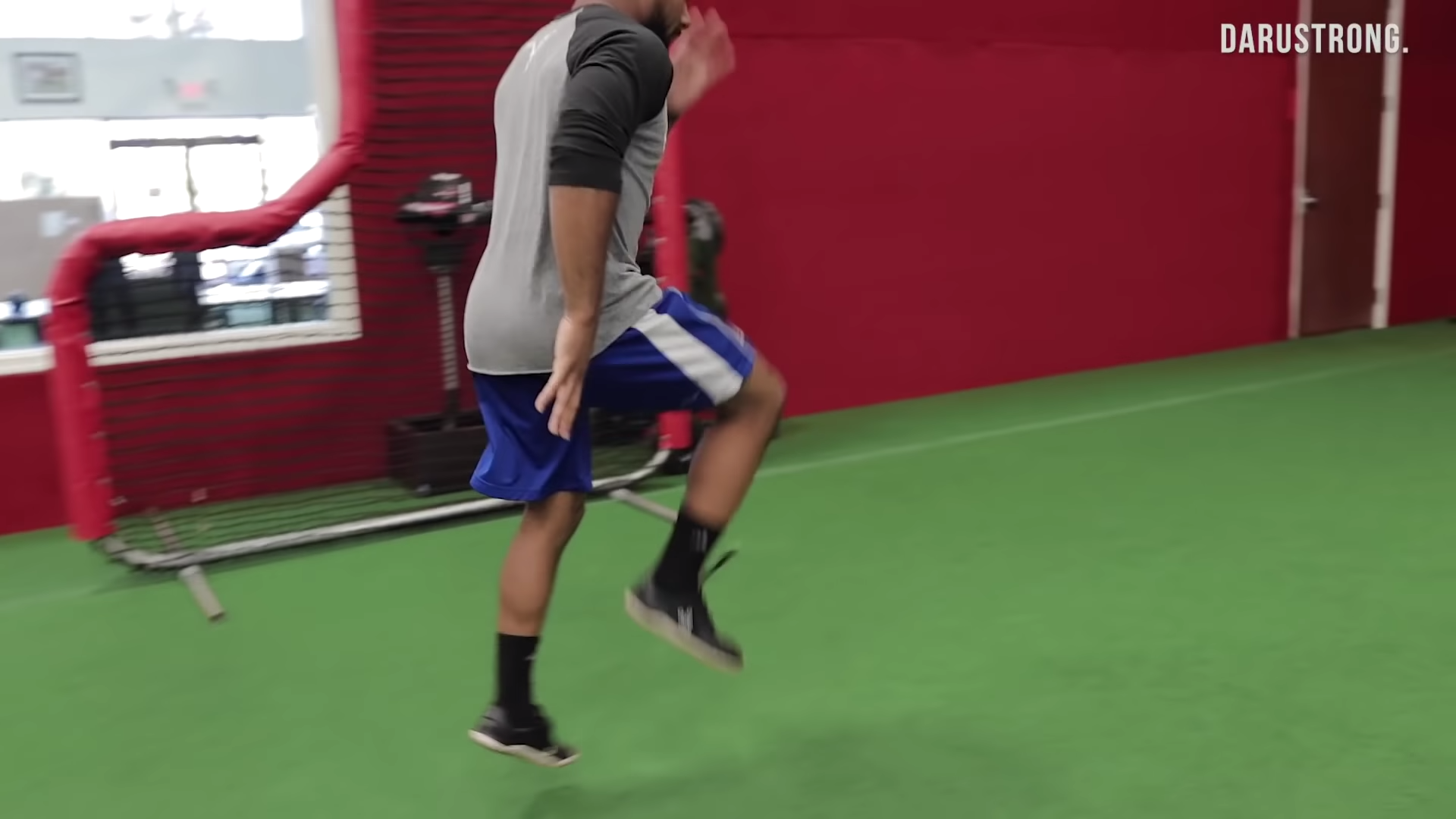
Contrast training is performing a heavy lift followed by an explosive movement of the same movement pattern.
The idea is that the heavy movement triggers post-activation potentiation, or PAP, of the neuromuscular system. PAP is the phenomenon by which muscle force production is increased due to the previous contraction.
As an example, you could perform heavy squats followed by a box jump.
The heavy lift heightens the nervous system. This heightened nervous system allows you to perform your box jump with more force.
The verdict is still out on the effectiveness of this modality.
Some studies have found benefit. Others have not.
I sprinkle it into my training as I’ve found it to be beneficial.
Tempos for Increasing Strength for Boxing and MMA Performance
Next I want to get a little advanced.
Tempo training is something that was traditionally used as a bodybuilding technique to place the muscles under high amounts of time under tension.
Now, thanks to Cal Dietz and his breakthrough book Triphasic Training, we’ve come to realize that tempo training can deliver a powerful athletic advantage to those who use it correctly.
Tempo training can deliver superior strength gains, prime the body for more explosiveness, and it can be used as a tool to transfer your strength into power.
Here’s how it works:
Each movement or exercise you perform can be broken down into three phases – the eccentric, isometric, and concentric portion.
If you think of a squat, the eccentric portion is the lowering, or down, portion.
The benefits of emphasizing the eccentric portion of a movement are many.
The biggest benefit lies in turning off Golgi tendon organ inhibition.
If you remember above, I said that the body has built in mechanisms that limit the amount of force the muscles can contract with. That is GTO inhibition.
However, when you train eccentrics, you actually restrict GTO inhibition, allowing you to produce more force in the long run.
The next portion of movement is the isometric portion.
In terms of a squat, the isometric portion is the time spent between lowering and raising the weight.
Accentuating the isometric portion of movement also has numerous benefits. The main benefit of training the isometric portion of movement is increased motor unit recruitment.
Motor units are the basic functional units of skeletal muscle. They determine the final output of the central nervous system.
When you train with isometric tempos, you actually teach your body to recruit larger, more “fast twitch” motor units.
Finally, the last portion of movement is the one we train the most – the concentric portion.
Most people already have well developed concentric strength.
In our case, we want to perform that concentric portion fast in order to turn strength into power.
We’ll use multiple modalities to achieve this – mainly training down the force-velocity curve.
Do You Want to Train Fighters or Elite Athletes?
If so, do you have questions about what it takes to attract athletes to your services? Do you have questions about how to become a world class trainer that delivers great results?
If so, you’re in luck.
Because right now, you can book a call with one of my coaches who will answer any questions you have about coaching, help you through your struggles, and place you on the best path to become a world class coach who works with world class athletes.
Plus, you’ll receive a free programming template that will allow you to quickly and easily write programs that deliver explosive results.
Spots are extremely limited.
Book your call for free at the link below:


